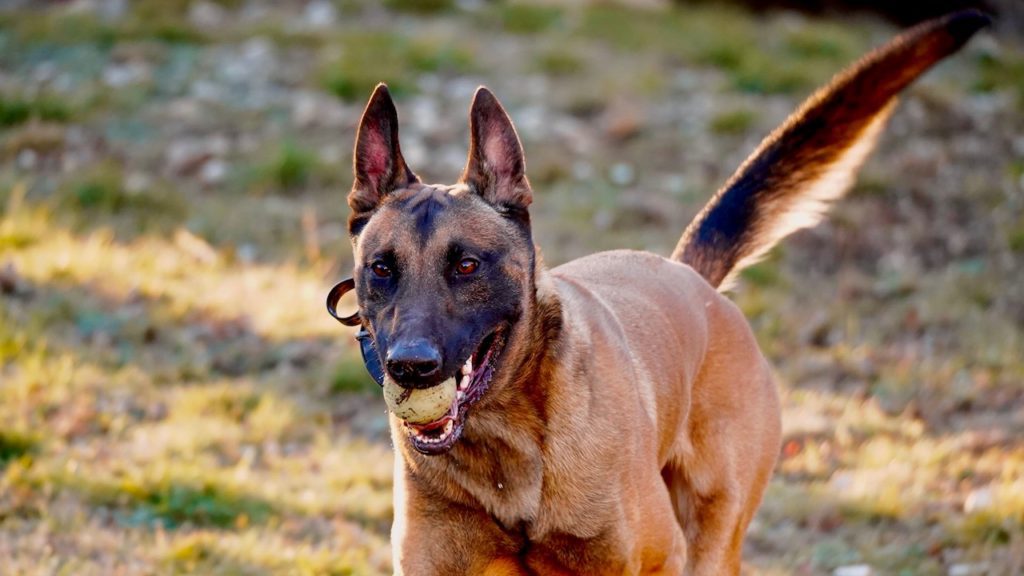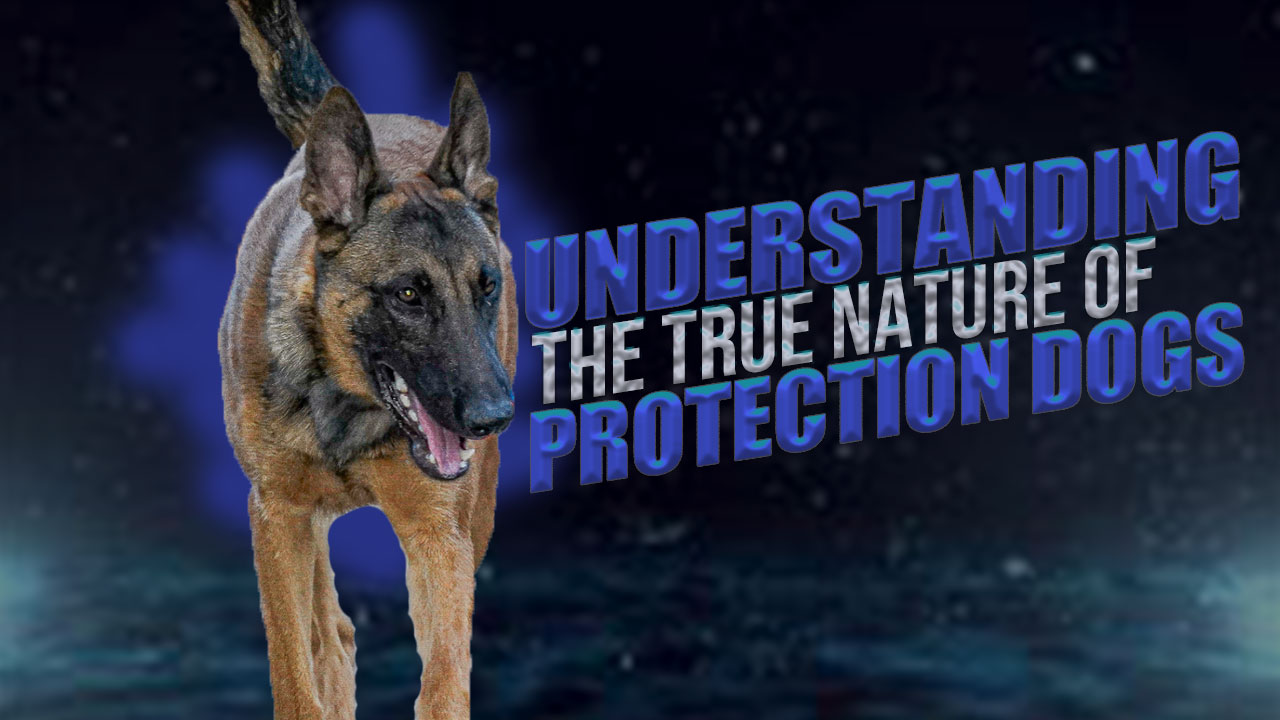Understanding dog behavior when protecting their owners
When owners understand their dogs’ body language and behavior, they can better protect themselves, as well as the dog. Dogs can sense danger and will act on instinct in an effort to protect their owners. It is important for owners to be able to read canine body language so that they can prepare for and respond accordingly. In this article, we will look at how dogs show protective behavior towards their owners, what are the risks involved, and how to best calm them down when needed. Whether you are a long-time companion looking to feel safe or a new pet parent seeking information, understanding dog behavior when protecting their owners is essential.

Understanding Dog Behavior
Dogs have been known to exhibit protective behavior towards their owners. But, what exactly goes on in a dog’s mind when it protects its owner? Animal behaviorists have studied this closely and have identified forms of territorial aggression in dogs that are often displayed when they sense danger or feel like their territory is being threatened.
One form of territorial aggression is when a dog displays protective behavior towards their owner. This behavior can be seen when a dog feels like its owner is under threat and feels obligated to defend them. In these instances, the dog may bark, growl, or even bite to keep the perceived threat at bay.
Similar behavior can also be seen in dogs when they are protecting their territory, such as their home or property. This form of aggression is often associated with territorial marking, where a dog will mark its territory with urine or by scratching the ground. They may also display resource guarding, where they protect their food, toys, or other objects they see as valuable.
It’s important to note that not all protective behavior in dogs is aggressive. Some dogs may display protective behavior without showing aggression, such as staying close to their owner, looking alert, or using body language to indicate that they are on high alert.
While protective behavior can be beneficial, it’s important for dog owners to understand that it can also be dangerous. Dogs may be hurt or injured while trying to protect their owners, and owners may also be held liable for any harm their dog causes to others.
To ensure that your dog’s protective behavior remains safe and under control, it’s recommended to seek professional help from an animal behaviorist or a dog forum. They can guide you on how to deal with territorial aggression and other forms of aggressive behavior in dogs.
Protective Role Of Dogs
Dogs are known for their loyalty and protective nature towards their owners. In fact, many dogs consider their owners as part of their pack, and it’s natural for them to protect their pack members from potential threats. However, protective behavior in dogs can manifest in different ways, and it’s essential for dog owners to understand their pet’s behavior to avoid any unfortunate accidents.
Before jumping into the different types of protective behavior in dogs, it’s important to define a few terms. Protective aggression is the dog’s willingness to defend its owners or territory, and it’s part of its natural instinct. The territorial aggressive display is the dog’s overt display of aggressive behavior, such as barking or growling, to deter potential threats.
There are various types of protective behavior that dogs may exhibit when they perceive their owners or family members are in danger. Some dogs may bark and growl to warn strangers away or stand between their owners and perceived threats. While others may become more aggressive, and some may even attack to protect their owners.
The breed of your dog can also influence their level of protectiveness, and understanding your dog’s breed origin can give you insight into their behavior. For instance, certain breeds such as German Shepherds and Rottweilers were initially bred for protection, and they are naturally predisposed to be protective of their owners. Knowing this can help you manage your dog’s behavior and avoid any unwanted incidents.
While protective behavior can be a positive trait, uncontrolled aggressiveness can lead to severe problems, including injuries to both you and your dog. Therefore, it’s essential to train your dog from a young age and socialize with other humans and animals to prevent aggressive behavior. Consistent training and positive reinforcement can help you manage your dog’s protective behavior effectively.
The Risk Associated With Protective Behavior
While a dog’s protective behavior towards its owner can be comforting, there are potential risks that come along with it. It’s important to understand these risks to ensure both the safety of the dog and its owner.
1. Possibility of Escalation of Protective Behavior
Dogs can quickly escalate their protective behavior from growling to biting, and if the owner is not careful, the situation can spiral out of control. It is especially important to monitor a dog’s behaviors if they have exhibited territorial aggression in the past. This type of aggression can be sparked by anything from a person approaching the owner’s property to a car parked in the driveway. When it comes to territorial aggression, it’s best to seek the help of a professional trainer to ensure that the dog’s behavior can be controlled.
2. Liability Claims
According to the Insurance Information Institute, one-third of all homeowners insurance liability claims are due to dog bites. If a dog bites someone while attempting to protect their owner, the owner can be held legally responsible for any injuries inflicted. In addition to liability claims, some insurance companies may have restrictions or prohibitions on certain breeds or behaviors such as protective behavior.
3. The Risk of Injury to the Dog
When a dog is attempting to protect their owner, they may not be aware of the danger that they are putting themselves in. For example, if the owner is being attacked, the dog may bite or attack the assailant and suffer injuries as a result. It’s important for the owner to be aware of their pet’s behavior and intervene if necessary as the safety of both the dog and their owner is critical.
4. Avoiding or Managing Protective Behaviors
To avoid the risks associated with protective behavior, it is important to train a dog to understand when protection is necessary, and when it is not. This can be accomplished through obedience training and socialization. Dogs must learn to obey commands and to distinguish which situations warrant protective behavior. If the protective behavior is too strong, professional training and intervention may be needed to address and manage the behavior.
Factors Influencing Protective Behavior
Many factors can influence a dog’s behavior when it comes to protecting its owner. Understanding these factors can help prevent any negative outcomes and ensure a safe and happy relationship between dog and owner.
1. Disease Control
A dog’s protective behavior can be influenced by their health. Illnesses or health conditions can make a dog more protective or aggressive towards unfamiliar people or animals. Therefore, it is essential to ensure your dog is healthy and well-treated. Regular vet check-ups can prevent any health issues that may cause your dog to behave aggressively.
2. Past Experiences
Dogs’ past experiences can significantly influence their behavior. If a dog has been in a dangerous situation, they are more likely to be protective of their owner. Similarly, if they have had positive experiences with other people or animals, they are more likely to be friendly and less protective.
3. Strange Smell
Strange scents can also trigger a dog’s protective behavior. It is important to introduce your dog to new smells slowly. Exposure to strange smells should be done gradually to prevent a sudden defensive reaction.
Understanding Territorial Aggression
When it comes to understanding dog behavior, one of the most critical aspects is territorial aggression. Territorial aggression is an instinctive behavior in dogs that is triggered by various stimuli, including new surroundings, eye contact, and human aggressive movements. Dogs are natural protectors and can become territorial when they feel that their “territory” or owner is being threatened in any way.
Understanding territorial aggression is crucial for dog owners to keep their dogs and themselves safe. Territorial aggression can manifest in different ways, including barking, growling, snarling, biting, or even attacking. Therefore, it is essential to identify the triggers for territorial aggression in dogs and take necessary precautions to avoid or manage them.
Identifying the cause of territorial aggression
Taking preventative actions
Training your dog to manage territorial aggression
Identifying the cause of territorial aggression:
Dogs can become territorial when they encounter a new surrounding or encounter new people. This can happen when they are taken out of their familiar environment or introduced to new people. Eye contact can also trigger territoriality in dogs. When a dog feels threatened or feels like their “territory” is being invaded, their territorial instincts can kick in, leading to aggression.
Taking preventative actions:
Dog owners can take several steps to prevent their dogs from becoming territorial. One of the first steps is to avoid situations that may trigger territorial aggression. Dogs should be gradually introduced to new environments and new people to get them familiar and comfortable. Owners should also avoid direct eye contact with unfamiliar dogs.
Training your dog to manage territorial aggression:
If your dog continually exhibits territorial aggression, it is essential to seek the help of a professional dog trainer. Professional training can help your dog learn how to manage their territorial instincts more effectively. Training can also help owners learn how to read their dog’s behavior and take appropriate action to prevent aggressive behavior.


